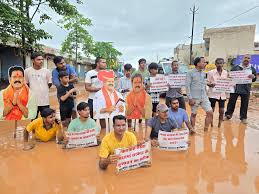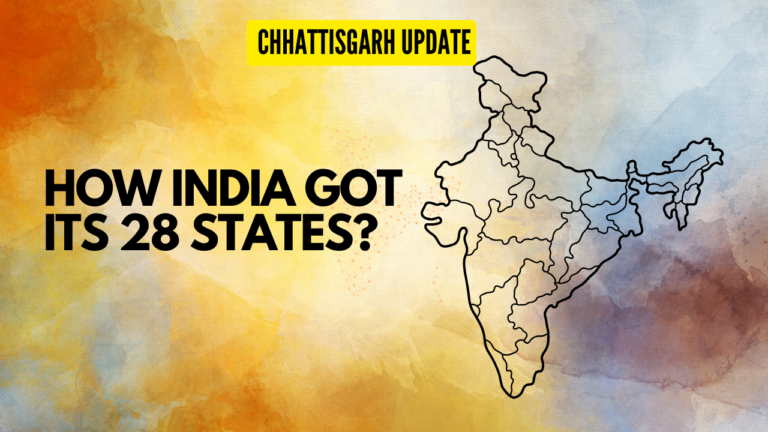The Government of Chhattisgarh plays a vital role in the progress and governance of the Indian state of Chhattisgarh and its 33 districts. As the supreme governing authority, the state government operates through an executive, legislative, and judicial branch, working towards the welfare and development of its people [1][2].
Structure of the Government of Chhattisgarh
The Government of Chhattisgarh operates under a structured framework consisting of three branches: the executive, judicial, and legislative branches. Each branch has distinct responsibilities and functions. The executive branch is led by the Governor of Chhattisgarh, who is the constitutional head of the state. The Governor appoints the Chief Minister, who heads the council of ministers responsible for the day-to-day administration of the state. They work together to implement policies and programs for the welfare and development of Chhattisgarh [2]. The judicial branch ensures the fair interpretation and application of laws. It consists of the Chhattisgarh High Court and various district and subordinate courts. These courts provide justice and uphold the rule of law within the state [2]. The legislative branch in Chhattisgarh consists of the Chhattisgarh Legislative Assembly, which has 90 seats. It represents the voice of the people and enacts laws, policies, and regulations that govern the state. Members of the Legislative Assembly are elected through periodic elections [7].
The Government of Chhattisgarh undertakes several functions and responsibilities to ensure efficient governance, policy-making, and service delivery. Some of these key functions include:
Governance and Administration The state government ensures effective governance and administration across Chhattisgarh. It establishes administrative structures and processes to manage public affairs, maintain law and order, and promote public welfare. The government works towards creating an environment conducive to social, economic, and infrastructural development [5].
The Government of Chhattisgarh is responsible for formulating policies, laws, and regulations that address the needs and aspirations of the people. It aims to provide a conducive environment for economic growth, sustainable development, and social justice. The legislative branch plays a crucial role in enacting laws that reflect the will of the people and ensure good governance [2].
The state government of Chhattisgarh is committed to improving the lives of its citizens through the implementation of various service delivery programs and welfare schemes. These initiatives cover areas such as healthcare, education, agriculture, rural development, women’s empowerment, and poverty alleviation. The government strives to provide equitable access to essential services and enhance the overall quality of life in the state [9].
District administration plays a pivotal role in implementing government policies and programs at the grassroots level. The state government has a well-defined structure for district administration, with each district headed by a District Collector. District Collectors are responsible for coordinating various government departments, implementing developmental projects, maintaining law and order, and addressing public grievances. They act as a bridge between the state government and the local population, ensuring effective governance and service delivery [4].
The Government of Chhattisgarh has undertaken several initiatives and schemes to promote development and welfare. Some notable programs include:
Agricultural Initiatives: Chhattisgarh has a predominantly agrarian economy, and the government has implemented several agricultural initiatives to improve farming practices, increase agricultural productivity, and support farmers with access to credit, irrigation, and market linkages.
The Government of Chhattisgarh has developed official websites and online platforms to facilitate easy access to government information and services. These websites provide valuable resources, updates on government initiatives, and e-services for citizens, such as online application submission, payment of fees, and access to various government documents. These online services aim to streamline processes, reduce paperwork, and enhance transparency [8].
Chhattisgarh, located in east-central India, boasts a rich cultural heritage and natural beauty. Here are some important facts and figures about the state:
Geography and Demographics: Chhattisgarh shares its borders with Uttar Pradesh, Jharkhand, Odisha, Telangana, Maharashtra, and Madhya Pradesh. Its capital is Raipur. The state has a diverse population and is known for its tribal communities, languages, and traditions.
Educational Institutions and Infrastructure: Chhattisgarh has made significant strides in education. The state is home to numerous educational institutions, including universities, colleges, and schools, offering a wide range of courses and disciplines. The government continues to invest in educational infrastructure to provide quality education to its citizens.
The Government of Chhattisgarh plays a crucial role in shaping the development and progress of the state. Through its structured framework and various initiatives, it aims to ensure good governance, enhance service delivery, and uplift the lives of its citizens. The government’s commitment to welfare programs, infrastructure development, and effective administration reflects its dedication to empowering progress and development in Chhattisgarh.
1. How can I access government services online in Chhattisgarh?
2. Who is the current Chief Minister of Chhattisgarh?
3. What3. are some key welfare programs in Chhattisgarh?
4. How is the government structured at the district level?
5. Where can I find more information about Chhattisgarh’s government initiatives?



